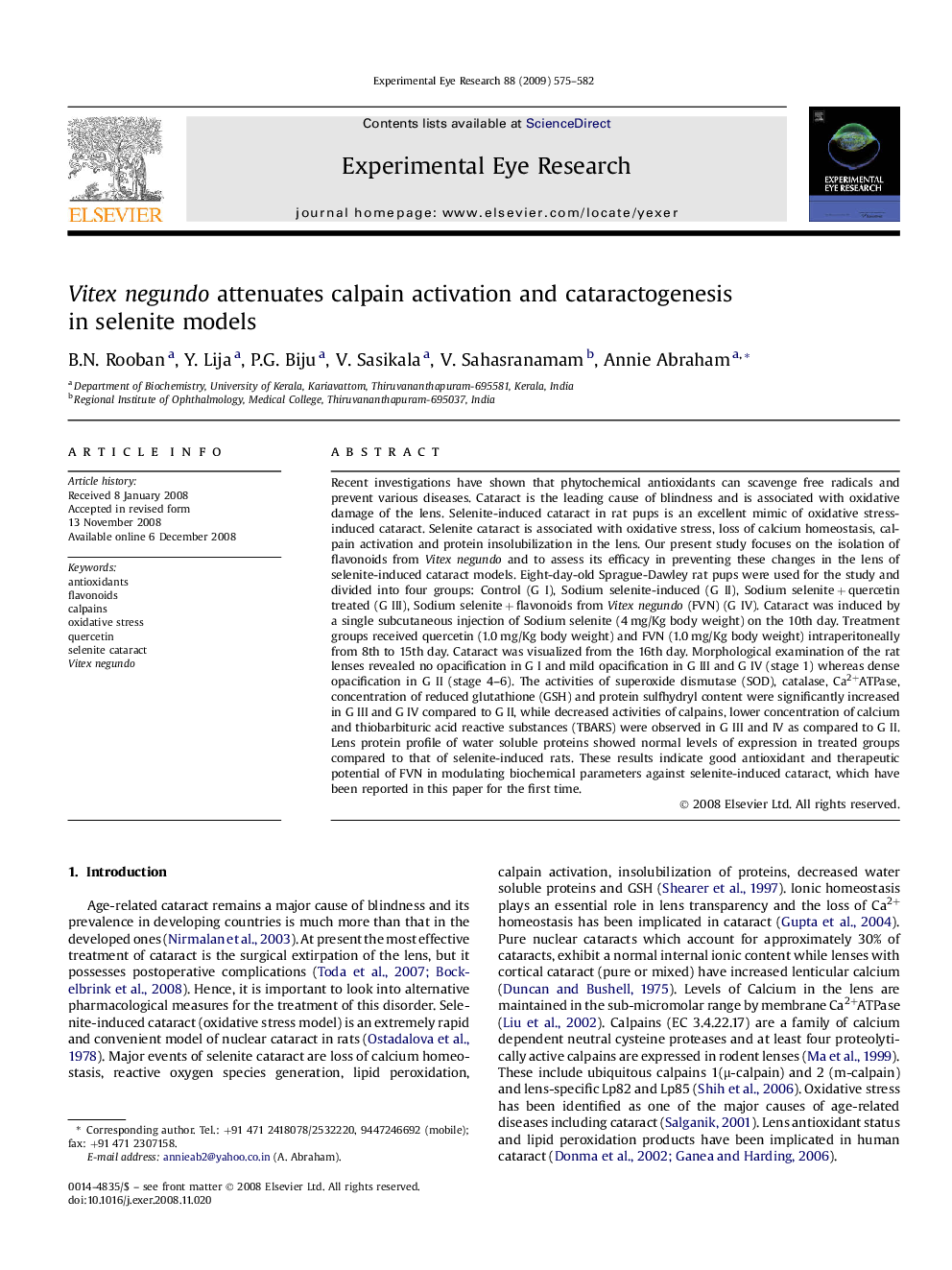| Article ID | Journal | Published Year | Pages | File Type |
|---|---|---|---|---|
| 6197566 | Experimental Eye Research | 2009 | 8 Pages |
Recent investigations have shown that phytochemical antioxidants can scavenge free radicals and prevent various diseases. Cataract is the leading cause of blindness and is associated with oxidative damage of the lens. Selenite-induced cataract in rat pups is an excellent mimic of oxidative stress-induced cataract. Selenite cataract is associated with oxidative stress, loss of calcium homeostasis, calpain activation and protein insolubilization in the lens. Our present study focuses on the isolation of flavonoids from Vitex negundo and to assess its efficacy in preventing these changes in the lens of selenite-induced cataract models. Eight-day-old Sprague-Dawley rat pups were used for the study and divided into four groups: Control (G I), Sodium selenite-induced (G II), Sodium selenite + quercetin treated (G III), Sodium selenite + flavonoids from Vitex negundo (FVN) (G IV). Cataract was induced by a single subcutaneous injection of Sodium selenite (4 mg/Kg body weight) on the 10th day. Treatment groups received quercetin (1.0 mg/Kg body weight) and FVN (1.0 mg/Kg body weight) intraperitoneally from 8th to 15th day. Cataract was visualized from the 16th day. Morphological examination of the rat lenses revealed no opacification in G I and mild opacification in G III and G IV (stage 1) whereas dense opacification in G II (stage 4-6). The activities of superoxide dismutase (SOD), catalase, Ca2+ATPase, concentration of reduced glutathione (GSH) and protein sulfhydryl content were significantly increased in G III and G IV compared to G II, while decreased activities of calpains, lower concentration of calcium and thiobarbituric acid reactive substances (TBARS) were observed in G III and IV as compared to G II. Lens protein profile of water soluble proteins showed normal levels of expression in treated groups compared to that of selenite-induced rats. These results indicate good antioxidant and therapeutic potential of FVN in modulating biochemical parameters against selenite-induced cataract, which have been reported in this paper for the first time.
